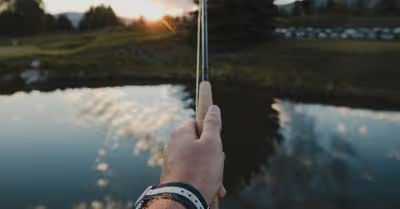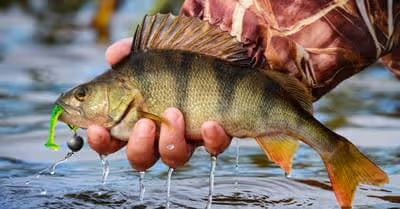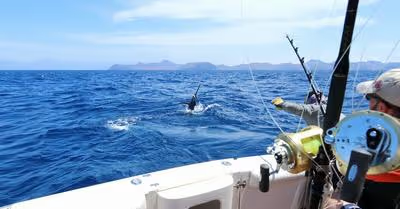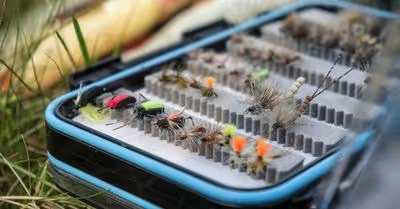Table of Contents
How to Know a Good, Bad and Great Fishing Knot
Jumping straight to the fishing knots won’t be of much help if you can’t differentiate between a good, bad, and a great fishing knot.
How to Determine a Bad Knot
The main feature of a bad knot is that it will slip or unravel under heavy pressure. For instance, it will leave you counting your losses if a huge catch bites your bait. You’ll also know that a knot is bad if it has a curly tag. A bad knot will either mean that you chose the wrong type of knot or you did not tie the knot properly. With that in mind, you should use any knot that has a curly tag at the end. This is because your knot may break at the most critical moment and this might spoil your fishing trip.
How to Determine a Good Fishing Knot
A good fishing knot may carry out the job but not perfectly. This means that it won’t slip or unravel but might break at the critical moment.
How to Determine a Great Fishing Knot
This is exactly what you should go for your fishing endeavors. A great fishing knot should not slip or unravel and must have a higher breaking point than a good knot. In other words, it should work perfectly even when the tension is much higher.
Here are the Fishing Knots to Know
Let’s describe them based on categories.
Line-to-Line Fishing Knots
These are principally the types of fishing knots that you can use to connect one fishing line to another line. Under this category, the blood knot is very popular with anglers but the double uni knot is the easiest to tie and very reliable. However, the J Knot is the best if you want a line to line knot that works just perfectly.
Blood Knot
This is a great fishing knot if you’re looking to tie two pieces of fishing lines together. It’s perhaps the most popular line to line fishing knot. You can use it if you want to go fly fishing or if you want to get the most out of odd length or broken fishing lines. For this reason, it’s a great fishing knot to learn as it can help you in the worst-case scenario while out there on the water. Although it’s perfect for connecting two types of similar fishing lines, it can be of great help if you find yourself in a situation where you need a makeshift fishing line.
In short, the blood knot is a tried and tested fishing knot that’s very popular with fly anglers. To increase its strength, you can consider making about 5 or 7 wraps on each side of the knot. You should also remember the blood knot works best with lines that have almost the same diameter.
How to Tie a Blood Knot
- Overlap both ends of the lines that you want to join
- Twist one end of the line around the other, not less than 5 times and not more than 7 times.
- Bring the tag end back between the two lines
- Do the same for the other end but wrap in the opposite direction and do exactly the same number of turns (5 or 7 times)
- Pull the line slowly in the opposite directions
- Turn the wraps together and close the ends of the knot
Double Uni Knots
The Double Uni knot is very popular with anglers both in salt and freshwater. It’s a perfect fishing knot if you want to join two fishing lines of similar or different strengths and lengths. Even though most anglers find it easier to tie than the blood knot, these two types of line to line fishing knots provide almost the same reliability.
When using a double uni knot, it’s important to make about 6 or 8 turns if you’re using a slippery braided line and about 5 turns if you’re using a mono-line but this will also depend on the thickness of the line.
How to Tie a Double Uni Knot
- Overlap both ends of the line that you want to tie
- Take one end of the line from the left and double it back to make nearly 3 or 4 wraps around both lines
- Make sure that the wraps go through the loops that were created when you overlapped
- Pull the tag end to make it tight
- Repeat the same on the right side of the line and make the same number of wraps (3 or 4 wraps). If you’re using a braided line, you should double the number of wraps (about 6 or 8 times)
- Now that you have the uni knots, pull the remaining lines in the opposite directions. This is to slide the two knots together to make them firmer.
- Make sure that you clip the ends that are close to both sides of the knot
Surgeon Knot
The surgeon knot is one of the easiest ways to tie fishing lines of equal or unequal diameters. This is a great knot if you are short on time. For example, it can be a great fishing knot if you want to join two fishing lines in low light conditions, when your hands are cold or when you’re looking to get back on the water as soon as possible.
Unlike other types of line to line fishing knots such as blood knot and double uni, the surgeon knot is very simple to use and can be used to join two different materials (fluoro and braid). It essentially involves the use of two overhands, as well as a leader line that’s pulled through each knot. This is a type of fishing knot that generally guarantees you 100% strength in almost all situations as long as it’s tightly pulled on all 4 strands.
How to Tie a Surgeon Knot
- Overlap both the mainline and the leader line by several inches
- Create a very simple loop
- Pass the tag ends and the entire leader line through the loops twice
- Moisten the knot and pull all the four strands tightly
J Knot
This is arguably the strongest line to line fishing knot. Even though it begins much like a surgeon knot, it takes an alternate wrap. This is to ensure that the knot puts no or less stress on the lines.
How to Tie a J Knot
- Overlap the mainline and the leader line several inches on top of each other.
- Create a loop with double lines. You can do this by tying an overhand knot and pull the entire leader through the loop.
- Pass the end of the line and the entire leader line through the loop but from the backside
- Repeat this from the top of the loop and then from the bottom of the loop and do it twice
- Moisturize the line and make sure that all the strands are pulled tight
Line-to-Hook Fishing Knots (Terminal Connections)
Although the Palomar Knot is the most popular and the strongest line to hook fishing knot, there are still other reliable lines to hook fishing knots that will serve you just perfectly.
Palomar Knot
There’s a reason why most anglers believe that the Palomar Knot is the best line to hook knot. When tied properly, a Palomar knot can be one of the strongest if not the strongest fishing knot. It’s, however, important to ensure that the hook is passed through the loop and that the knot is perfectly cinched together.
If you tie it properly, the Palomar knot will firmly secure the hook to one end of the fishing line or even fasten a fly to a leader line.
How to Tie a Palomar Knot
- Make a loop by doubling your line
- Push the loop through the eye of the hook
- Pass the loop through and around the hook
- Pull on the line and tighten firmly
- Clip the loose end of the line if there’s any
Improved Clinch Knot
The Improved Clinch Knot is one of the best lines to hook knots if you’re using a monofilament fishing line. This is an “improved” version of the traditional clinch knot given that it’s easy, simple, and reliable. This type of knot is strong and firm and can hold its bargaining end when battling a huge catch.
How to Tie an Improved Clinch Knot
- Thread the line through the hook
- Make about 7 wraps around the line with the loose end
- Thread the loose end of the line through the loop closest to the eye
- Pass the line back around the inside of the loose part of the line
- Tightly pull both ends of the line
- Clip the loose ends of the line
Snell Knot
This type of fishing knot involves snelling a line through the hook through a uni knot. It’s a very versatile form of a fishing knot that can be used in different fishing situations. This is because it provides an even and straight line when pulling the fish.
How to Tie a Snell Knot
- Pass the tag end of the line through the hook’s eye twice
- Form a loop that hangs just alongside the hook
- Tie the loop around the hook about 5 times to form tight coils
- Hold the coils in one place and pull the line up until the loop holds up under the coils
Tips to Follow when Tying Fishing Knots
Here are some important tips to follow if you want your fishing knots to work perfectly.
Choose Your Fishing Knot Perfectly
The selection of your fishing knot is a very crucial process that you should never take lightly. If you’re looking to catch some big fish such as bass, it’s important to focus more on the strength and durability of your knot.
Moisten Your Line
Tying your fishing knots will be much easier if your fishing line is moist with water or saliva.
Tighten Slowly
When tightening your knots, make sure that you do it slowly and steadily. In other words, you shouldn’t do it quickly with a lot of pressure or you’ll risk breaking it.
Test the Strength
You should test the strength of your knot to make sure that it’s tied appropriately. You can do this by giving the line some hard tugs to see whether or not the knot is solid and can contain the pressure when fishing.
Practice Hot to Tie the Knots
Practice makes perfect and if you practice how to tie the knots, you’ll be able to hone your tying skills and will, of course, improve your fishing experience. By practicing how to tie your fishing knots ahead of time, your fishing will be a breeze and you won’t have fumble with your line while out on the water. That being said, you should practice how to tie your fishing knots if you want to become a flexible and efficient angler.
Recent Articles
















